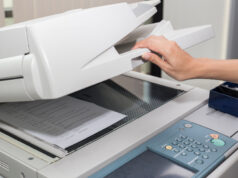In today’s fast-paced business world, efficiency is the name of the game. Companies of all sizes are constantly seeking ways to optimize their operations, reduce costs, and boost productivity. One solution that has gained significant traction in recent years is automated packaging.
In this article, we’ll delve into the world of automated packaging solutions, discussing their growing importance, the benefits they offer, different types available, real-life success stories, key implementation considerations, technological advancements, and their contribution to sustainability goals.
The Importance of Automated Packaging
Picture this: a bustling warehouse filled with products, each needing to be carefully packaged and prepared for shipment. Traditionally, this process relied heavily on manual labor, which came with its own set of challenges – human error, variable speeds, and labor costs.
Enter automated packaging solutions, a game-changer for modern businesses. Automation revolutionizes the way products are packaged, making it faster, more precise, and cost-effective.
Benefits of Automation
The benefits of automated packaging are numerous and impactful. First and foremost, it significantly increases efficiency. Automated machines tirelessly perform tasks without getting tired or distracted. They can work 24/7, ensuring that packaging operations continue uninterrupted. This not only speeds up the process but also reduces labor costs in the long run.
Moreover, automated packaging solutions improve accuracy. Machines don’t make mistakes due to fatigue or lapses in attention. This means fewer errors in packaging, reducing the likelihood of costly returns and customer dissatisfaction.
Types of Automated Packaging Solutions
Automated packaging solutions come in various forms, each tailored to specific needs. Case sealers, for instance, are machines designed to securely seal boxes, saving time and ensuring packages are properly sealed for transit.
Labeling machines take the hassle out of affixing labels to products, ensuring every item is correctly marked. Pick-and-place robots are adept at handling and positioning products within packages with precision and speed.
Real-Life Success Stories
Let’s take a look at a real-life example. Company X, a mid-sized e-commerce business, faced a packaging bottleneck as online orders surged. They implemented automated packaging solutions that integrated seamlessly with their existing systems.
This move not only reduced their labor costs but also allowed them to process orders at lightning speed. Customer satisfaction soared, leading to increased sales and profitability.
Key Considerations for Implementation
Before diving into automated packaging, it’s crucial to consider a few key factors. Integration with existing systems is paramount. Compatibility with your current setup ensures a smooth transition to automation. Budgeting is also a crucial aspect.
While upfront costs may seem significant, the long-term savings often outweigh them. Also, think about scalability – can your automated packaging solution grow with your business?
Technological Advancements
The world of automated packaging is constantly evolving. Recent advancements include the use of Artificial Intelligence (AI) to optimize packaging processes, robotics to handle intricate tasks, and smart packaging solutions that provide real-time tracking and monitoring capabilities.
Sustainability in Automated Packaging
Sustainability is a buzzword in today’s business landscape, and automated packaging can play a role here too. By reducing packaging errors and minimizing waste, automation contributes to sustainability goals.
Moreover, energy-efficient machines and smart packaging materials can further reduce a company’s environmental footprint.
Conclusion
Automated packaging solutions are not just a trend; they are a transformative force that can catapult your business to new heights of efficiency and productivity. From faster operations to reduced labor costs and improved accuracy, the benefits are clear. Now is the time to explore the possibilities of automation.












![Excel cannot Open the File Because the Extension is not Valid Error [Fix 2024]](https://www.techpreview.org/wp-content/uploads/2024/04/Excel-cannot-Open-the-File-Because-the-Extension-is-not-Valid-Error-238x178.jpg)






